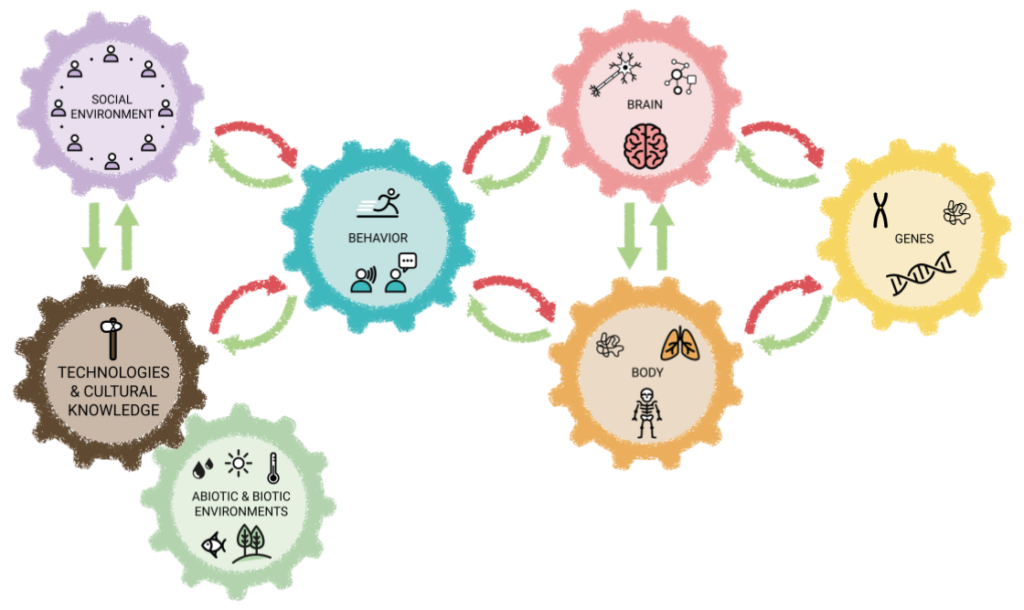Gene-culture Co-evolution
Biological evolution and cultural evolution are not mutually exclusive. On the contrary, they can influence each other. Genetically evolved human characteristics and abilities allowed for the accumulation and transmission of certain technologies, knowledge, behaviors, and environmental changes. These human-created conditions have in turn influenced our behavior, our body, our brain, and our genes throughout our evolutionary history.
Many biologists think that the following kinds of genes have probably spread in human populations due to selection by the social and cultural environment:
- Genes that enable the digestion of certain foods (such as milk and dairy products, carbohydrate-rich foods, alcohol), with domestication and agriculture as cultural environmental factors acting as selection pressures
- Genes that provide immunity against certain infectious diseases (e.g., malaria). Increasing population density, domestication and sedentary lifestyles increased the pressure from pathogens.
- Genes that increase tolerance to hot and cold temperatures due to the spread of our species into new environments with different temperatures.
- Genes that affect our outer phenotype (skin color, hair color and density, eye color, freckles) due to the spread of our species into new environments with different temperatures and/or through sexual selection
- Genes that influence brain function and development and the ability for language/speech and for motor control because of the importance of these skills for social life
References
- Laland, K. N., Odling-Smee, J., & Myles, S. (2010). How culture shaped the human genome: Bringing genetics and the human sciences together. Nature Reviews Genetics, 11(2), 137–148. http://doi.org/10.1038/nrg2734
- Nielsen, R., Hellmann, I., Hubisz, M., Bustamante, C., & Clark, A. G. (2007). Recent and ongoing selection in the human genome. Nature Reviews Genetics, 8(11), 857–868. https://doi.org/10.1038/nrg2187


